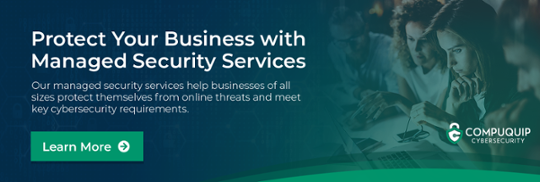5 Best Practices For Managed Security Systems
Protecting digital assets from cyberattacks can be a major challenge as criminal and cyberterror tactics become more advanced.
Assembling an internal cybersecurity team can be expensive and time-consuming. Determining the most important cybersecurity solutions you need to implement depending on your organization’s structure, and security requirements is already a major task. Conducting system audits to understand where your network may have weaknesses can be a full-time, ongoing job.
According to Statista, as of 2022, the average data breach cost in the United States amounted to 9.44 million U.S. dollars, up from 9.05 million U.S. dollars in the previous year. The global average cost per data breach was 4.35 million U.S. dollars in 2022.
So in this article, we want to unpack some best practices for managed security systems (MSS). These may be the things you want to focus on as you begin developing your cybersecurity strategy.
Stop Data Loss.
You will want to prioritize data loss prevention as you develop your managed security systems strategy. Not only do data leaks harm organizations’ reputations, but they can also be seriously damaging to business operations and customers’ safety and well-being. Preventing data leaks needs to be a major aspect of your MSS. In a world where data transmission takes seconds, minimizing data loss, whether from accidents or intentional attacks, is a critical aspect of any cybersecurity strategy.
Detect Insider Threats.
While we hate to mention insider threats, the tough reality is that they are more common than you think. Insider threats are any potential attacks that come from within an organization. They may be motivated by revenge from an upset employee, personal profit, or espionage, or they may even result from an accident.
Part of avoiding insider cyberattacks is identifying key indicators. Key indicators can serve as barometers for potential threats to address them before they harm your network or systems. Some critical insider threat indicators include strange access requests. Gaining access to systems outside of working hours or from unregistered endpoints could be a sign that someone is trying to access data unauthorizedly.
The same goes for increased user access to sensitive internal systems, the introduction of unauthorized storage media on the network, and an increase in emails to addresses outside of the organization. Human behavior can also be a key indicator. If an employee plans to break into your system to steal data or insert malware, they may start acting differently in the office. We don’t think this should be the only factor you consider – you don’t want to be untrusting your coworkers – but if other flags are being raised, peoples’ behavior can be a piece of the puzzle. And of course, if someone quits suddenly, be sure to remove any access they have to sensitive network information.
Back-Up Data.
As you develop your MSS, you’ll want to consider how you will react if a breach or attack does occur. Of course, the objective is to prevent a cyberattack, but with hackers constantly improving, having a disaster recovery plan is a best practice.
A significant part of your disaster recovery plan should include how you back up and store data. Imagine your network is affected by a ransomware attack. If you have a remote backup in place, you can easily replace any data that is corrupted when you don’t pay up.
Educate and Train Your Users.
85% of data breaches were due to the "human element," and in a report produced by Tessian, they found that “43% of employees are "very" or "pretty" certain they have made a mistake at work with security repercussions.” So, user error is extremely common, and many employees know that they don’t know enough about cybersecurity to keep networks safe!
Shifting quickly to home office work opened up many networks to threats that most employees had never considered. They would log in to a secure office network with a dedicated security team, and any anomalies in network use data were automatically flagged. Now, with teams distributed (and chances are things will stay this way), the pressure lies on employees working remotely to keep their network safe from threats. Training and education on cybersecurity are critical. Having an effective incident prevention and response plan that is easy for non-IT professionals to understand and follow can be what ultimately saves you from experiencing a breach. Keep it simple, and invest in robust training. It will pay off in the long run.
Consistently Update Software and Systems.
Like training, system updates need to be ongoing to keep up with technological changes. Network security checkups need to be routine, and should be done at random. Undergoing routine network security checkups will help identify threats on your network, and determine if any data has been leaked at any point in time. They can discover exploited vulnerabilities, and provide organizations with ways to update and protect when vulnerabilities are identified.
This is an ongoing process, that can be very labor-intensive. It involves continuously seeking to hack your own network and identify risks. You may want to hire external “white hat” hackers to test your systems’ security. You may be surprised to find out how vulnerable your network is, but that’s what Compuquip and SentinelOne partner together on to help you address any network vulnerabilities or cybersecurity threats.
When you partner with a top-tier managed security services provider like Compuquip, you’ll get a comprehensive team and strategy modeled specifically for your organization. Check out the Compuquip MSSP service calculator to get specific recommendations to set up your master cybersecurity plan now!

